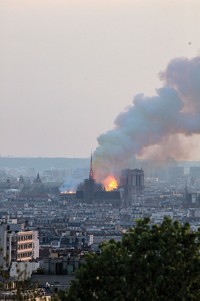Advertisement
Grab your lab coat. Let's get started
Welcome!
Welcome!
Create an account below to get 6 C&EN articles per month, receive newsletters and more - all free.
It seems this is your first time logging in online. Please enter the following information to continue.
As an ACS member you automatically get access to this site. All we need is few more details to create your reading experience.
Not you? Sign in with a different account.
Not you? Sign in with a different account.
ERROR 1
ERROR 1
ERROR 2
ERROR 2
ERROR 2
ERROR 2
ERROR 2
Password and Confirm password must match.
If you have an ACS member number, please enter it here so we can link this account to your membership. (optional)
ERROR 2
ACS values your privacy. By submitting your information, you are gaining access to C&EN and subscribing to our weekly newsletter. We use the information you provide to make your reading experience better, and we will never sell your data to third party members.
Pollution
Lead fallout from Notre-Dame fire more than originally reported
Analysis of soil samples near cathedral show high levels of toxic metal
by Laura Howes
July 18, 2020
| A version of this story appeared in
Volume 98, Issue 28

Ever since a fire devastated the Notre-Dame de Paris cathedral in April 2019, locals and environmental groups have raised concerns about the fate of lead in the cathedral’s roof and spire. Alexander van Geen of Columbia University set out to determine if those fears were justified. In December 2019 and February 2020, van Geen collected multiple samples of soil near the cathedral and measured lead concentrations via X-ray fluorescence. Statistician colleagues then used these measurements to estimate how much lead fell near the fire. Their results suggest that about 1,000 kg of lead settled within a kilometer of the cathedral—more than six times the amount estimated by local authorities (GeoHealth 2020, DOI: 10.1029/2020GH000279). Van Geen’s tests show that lead-laced dust settled in the area and may have also got into buildings. According to the US Centers for Disease Control and Prevention, ingesting contaminated house dust or soil is one way children become exposed to lead. Larger environmental tests immediately after the fire would have alerted health officials to the dangers, the researchers say. But few samples of soil, dust, or blood were collected immediately after the fire, making it difficult to ascertain how the lead from this event may affect human health.





Join the conversation
Contact the reporter
Submit a Letter to the Editor for publication
Engage with us on Twitter